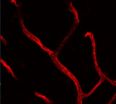(Press-News.org) The venom from marine cone snails, used to immobilize prey, contains numerous peptides called conotoxins, some of which can act as painkillers in mammals. A recent study in The Journal of General Physiology provides new insight into the mechanisms by which one conotoxin, Vc1.1, inhibits pain. The findings help explain the analgesic powers of this naturally occurring toxin and could eventually lead to the development of synthetic forms of Vc1.1 to treat certain types of neuropathic pain in humans.
Neuropathic pain, a form of chronic pain that occurs in conjunction with injury to—or dysfunction of—the nervous system, can be debilitating and difficult to treat, and the medical community is eager to find better methods to minimize what can be a serious condition. Neuropathic pain is associated with changes in the transmission of signals between neurons, a process that depends on several types of voltage-gated calcium channels (VGCCs). However, given the importance of these VGCCs in mediating normal neurotransmission, using them as a pharmacological target against neuropathic pain could potentially lead to undesirable side effects.
In previous studies, David Adams and colleagues from RMIT University in Melbourne showed that Vc1.1 acted against neuropathic pain in mice; they found that, rather than acting directly to block VGCCs, Vc1.1 acts through GABA type B (GABAB) receptors to inhibit N-type (Cav2.2) channels.
Now, Adams and colleagues show that Vc1.1 also acts through GABAB receptors to inhibit a second, mysterious class of neuronal VGCCs that have been implicated in pain signaling but have not been well understood—R-type (Cav2.3) channels. Their new findings not only help solve the mystery of Cav2.3 function, but identify them as targets for analgesic conotoxins.
INFORMATION:
Article: Berecki, G., et al. 2014. J. Gen. Physiol. doi: 10.1085/jgp.201311104
Commentary: Rittenhouse, A.R. 2014. J. Gen. Physiol. 10.1085.jgp.201411190
About The Journal of General Physiology
Founded in 1918, The Journal of General Physiology (JGP) is published by The Rockefeller University Press. All editorial decisions on manuscripts submitted are made by active scientists in conjunction with our in-house scientific editor. JGP content is posted to PubMed Central, where it is available to the public for free six months after publication. Authors retain copyright of their published works and third parties may reuse the content for non-commercial purposes under a creative commons license. For more information, please visit http://www.jgp.org.
Research reported in the press release was supported by the National Health and Medical Research Council.
How cone snail venom minimizes pain
Researchers show how the toxin Vc1.1 inhibits neuronal calcium channels to reduce neuropathic pain
2014-05-14
ELSE PRESS RELEASES FROM THIS DATE:
Scientists test hearing in Bristol Bay beluga whale population
2014-05-14
The ocean is an increasingly industrialized space. Shipping, fishing, and recreational vessels, oil and gas exploration and other human activities all increase noise levels in the ocean and make it more difficult for marine mammals to hear and potentially diminish their range of hearing.
"Hearing is the main way marine mammals find their way around the ocean," said Aran Mooney, a biologist at Woods Hole Oceanographic Institution (WHOI). It's important to know whether and to what extent human activity is negatively impacting them.
But how can we get marine mammals living ...
Snubbing lion hunters could preserve the endangered animals
2014-05-14
For hundreds of years young men from some ethnic groups in Tanzania,
called "lion dancers" because they elaborately acted out their lion
killing for spectators, were richly rewarded for killing lions that
preyed on livestock and people. Now when a lion dancer shows up he
might be called a rude name rather than receive a reward, according
to a new UC Davis study.
Some villagers are snubbing the lion killers, calling them "fakers"
and contemplating punishing them and those who continue to reward
them, said Monique Borgerhoff Mulder, anthropology professor at UC
Davis. ...
Deconstructing goal-oriented movement
2014-05-14
Our human brains are filled with maps: visual maps of our external environments, and motor maps that define how we interact physically within those environments. Somehow these separate points of reference need to correspond with — and to — one another in order for us to act, whether it's grasping a coffee cup or hitting a tennis ball.
How that happens is the focus of a new study by scientists at UC Santa Barbara. The researchers used neuroimaging to decode how the brain transforms sensory input into action. Their findings are reported in the Journal of Neuroscience. ...
Virtual pet leads to increase physical activity for kids, UGA research says
2014-05-14
Athens, Ga. – Placing children into a mixed reality—part virtual environment and part real world—has great potential for increasing their physical activity and decreasing their risk of obesity, according to University of Georgia researchers.
Sixty-one Georgia 4-H'ers, 9-12 years old, participated in a study designed to increase awareness and reduce childhood obesity. Participants set goals for the amount of physical activity they wanted to complete throughout the day over a course of three days. An activity monitor was worn to track their activity.
Children were split ...
Study shows tropical cyclone intensity shifting poleward
2014-05-14
MADISON, Wis. — The latitude at which tropical cyclones reach their greatest intensity is gradually shifting from the tropics toward the poles at rates of about 33 to 39 miles per decade, according to a study published today (May 14, 2014) in the journal Nature.
The new study was led by Jim Kossin, a National Oceanic and Atmospheric Administration (NOAA) National Climatic Data Center scientist stationed at the University of Wisconsin-Madison's Cooperative Institute for Meteorological Satellite Studies. The research documents a poleward migration of storm intensity in ...
NIH takes action on sex/gender in cell and animal studies
2014-05-14
What:
NIH leadership is available to answer questions from reporters about new policies that will be published online Wednesday in Nature to ensure that sex is treated as a fundamental variable in the preclinical biomedical research that it funds.
Article: NIH takes action on sex/gender in cell and animal studies. Nature. Clayton, J.A. & Collins, F.S.. Published online May 14, 2014.
Spokesperson:
Janine Austin Clayton, M.D., NIH Associate Director for Research on Women's Health, Director for the NIH Office of Research on Women's Health
INFORMATION:
Contact: To ...
Study: Dangerous storms peaking further north, south than in past
2014-05-14
Powerful, destructive tropical cyclones are now reaching their peak intensity farther from the equator and closer to the poles, according to a new study co-authored by an MIT scientist.
The results of the study, published today in the journal Nature, show that over the last 30 years, tropical cyclones — also known as hurricanes or typhoons — are moving poleward at a rate of about 33 miles per decade in the Northern Hemisphere and 38 miles per decade in the Southern Hemisphere.
"The absolute value of the latitudes at which these storms reach their maximum intensity seems ...
Possible new plan of attack for opening and closing the blood-brain barrier
2014-05-14
Like a bouncer at an exclusive nightclub, the blood-brain barrier allows only select molecules to pass from the bloodstream into the fluid that bathes the brain. Vital nutrients get in; toxins and pathogens are blocked. The barrier also ensures that waste products are filtered out of the brain and whisked away.
The blood-brain barrier helps maintain the delicate environment that allows the human brain to thrive. There's just one problem: The barrier is so discerning, it won't let medicines pass through. Researchers haven't been able to coax it to open up because they ...
Tropical cyclone 'maximum intensity' is shifting toward poles
2014-05-14
Over the past 30 years, the location where tropical cyclones reach maximum intensity has been shifting toward the poles in both the northern and southern hemispheres at a rate of about 35 miles, or one-half a degree of latitude, per decade according to a new study, The Poleward Migration of the Location of Tropical Cyclone Maximum Intensity, published tomorrow in Nature.
As tropical cyclones move into higher latitudes, some regions closer to the equator may experience reduced risk, while coastal populations and infrastructure poleward of the tropics may experience increased ...
Researchers discover how DHA omega-3 fatty acid reaches the brain
2014-05-14
It is widely believed that DHA (docosahexaenoic acid) is good for your brain, but how it is absorbed by the brain has been unknown. That is - until now. Researchers from Duke-NUS Graduate Medical School Singapore (Duke-NUS) have conducted a new study identifying that the transporter protein Mfsd2a carries DHA to the brain. Their findings have widespread implications for how DHA functions in human nutrition.
People know that DHA is an essential dietary nutrient that they can get from seafood and marine oils. Baby formula companies are especially attuned to the benefits ...
LAST 30 PRESS RELEASES:
Numbers in our sights affect how we perceive space
SIMJ announces global collaborative book project in commemoration of its 75th anniversary
Air pollution exposure and birth weight
Obstructive sleep apnea risk and mental health conditions among older adults
How talking slows eye movements behind the wheel
The Ceramic Society of Japan’s Oxoate Ceramics Research Association launches new international book project
Heart-brain connection: international study reveals the role of the vagus nerve in keeping the heart young
Researchers identify Rb1 as a predictive biomarker for a new therapeutic strategy in some breast cancers
Survey reveals ethical gaps slowing AI adoption in pediatric surgery
Stimulant ADHD medications work differently than thought
AI overestimates how smart people are, according to HSE economists
HSE researchers create genome-wide map of quadruplexes
Scientists boost cell "powerhouses" to burn more calories
Automatic label checking: The missing step in making reliable medical AI
Low daily alcohol intake linked to 50% heightened mouth cancer risk in India
American Meteorological Society announces Rick Spinrad as 2026 President-Elect
Biomass-based carbon capture spotlighted in newly released global climate webinar recording
Illuminating invisible nano pollutants: advanced bioimaging tracks the full journey of emerging nanoscale contaminants in living systems
How does age affect recovery from spinal cord injury?
Novel AI tool offers prognosis for patients with head and neck cancer
Fathers’ microplastic exposure tied to their children’s metabolic problems
Research validates laboratory model for studying high-grade serous ovarian cancer
SIR 2026 delivers transformative breakthroughs in minimally invasive medicine to improve patient care
Stem Cell Reports most downloaded papers of 2025 highlight the breadth and impact of stem cell research
Oxford-led study estimates NHS spends around 3% of its primary and secondary care budget on the health impacts of heat and cold in England
A researcher’s long quest leads to a smart composite breakthrough
Urban wild bees act as “microbial sensors” of city health.
New study finds where you live affects recovery after a hip fracture
Forecasting the impact of fully automated vehicle adoption on US road traffic injuries
Alcohol-related hospitalizations from 2016 to 2022
[Press-News.org] How cone snail venom minimizes painResearchers show how the toxin Vc1.1 inhibits neuronal calcium channels to reduce neuropathic pain




